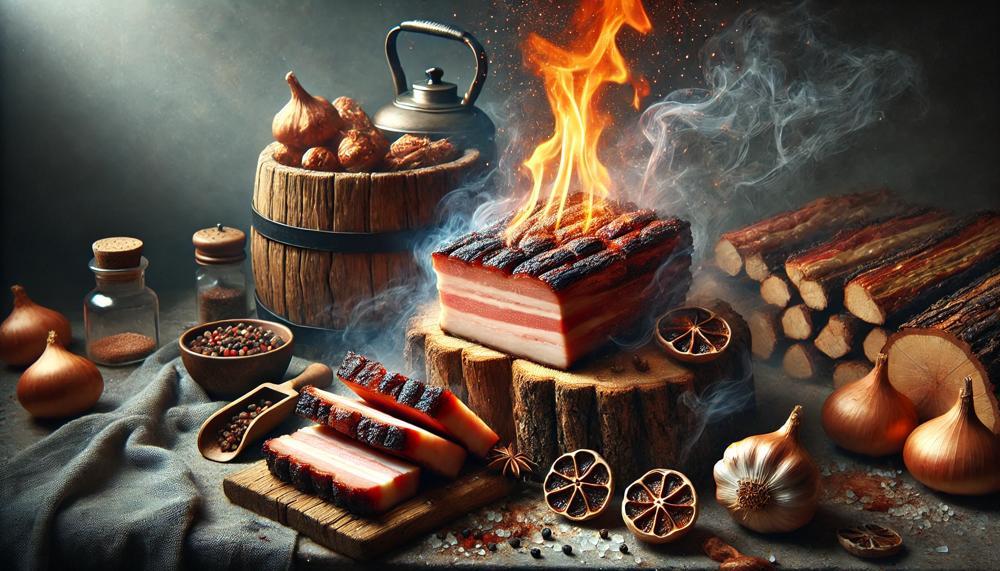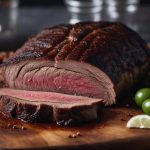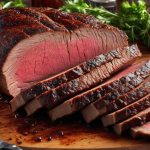If you’re planning to smoke pork belly, the wood you choose can make all the difference in the flavor profile of your dish. Whether you’re a barbecue aficionado or a curious cook, knowing the right type of wood to use is key to achieving that perfect smoky taste.
Here are the top contenders for smoking pork belly:
- Apple Wood: A popular choice, apple wood imparts a sweet, mild flavor that enhances the pork belly without overwhelming it.
- Cherry Wood: Excellent for making smoked pork belly burnt ends. It lets the pork’s natural flavors shine through with just a subtle touch of smokiness.
- Orange Wood: Though less common, orange wood offers a unique citrusy note that pairs beautifully with the rich fat of pork belly.
- Maple: Known for adding a gentle sweetness, maple wood is a fantastic option for sweetening up your pork belly, making each bite tender and flavorful.
- Pecan: This wood provides a milder smoke flavor with hints of sweet and black pepper, complementing the savory taste of pork belly exceptionally well.
- Hickory: For a balanced flavor, mix hickory with apple wood. Hickory alone can be strong, but when combined, it creates a perfect backdrop for the meat.
- Mesquite: Ideal for those who enjoy a bolder smoke. It’s best when mixed with cherry wood to temper its intensity, allowing the pork belly to absorb a rich, smoky flavor without being overpowered.
Understanding how each type of wood impacts your pork belly can transform your smoking process into an art form, promising delicious results every time. Whether you’re aiming for subtly sweet or robustly smoky, selecting the right wood is your first step to masterful smoking.
Contents
- 1 The Best Type of Wood for Smoking Pork Belly
- 2 My Favorite Mild Flavoured Wood Chips/ Pellets
- 3 Applewood Chips
- 4 Wood Chips or Pellets for a Balanced and Milder Flavor
- 5 Wood Chips or Pellets for a Strong Assertive Smoke Flavor
- 6 The Importance of Burning Industrial Wood Pellets and Chips
- 7 Smoking Process Tips For Pork Belly
- 8 Want to Go From Amateur to Pitmaster?
- 9 Conclusion
The Best Type of Wood for Smoking Pork Belly
For smoking pork belly, choosing the right type of wood is crucial to enhance the flavour without overpowering the natural taste of the meat. Here are the top picks for woods that will complement pork belly beautifully, along with their distinctive characteristics:
| Wood Type | Flavour Profile | Best For |
| Apple Wood | Sweet, mild, and fruity | General smoking, imparts a delicate sweetness |
| Cherry Wood | Mild and slightly sweet | Enhancing natural flavours with a subtle smokiness |
| Maple Wood | Sweet and light | Adding a gentle sweet touch to tender pork belly |
| Pecan Wood | Sweet, mild, with a hint of pepper | Complementing savoury flavours without overwhelming |
| Mesquite (when mixed with Cherry) | Strong, earthy | Balancing intense smokiness with sweetness from cherry wood |
| Hickory (mixed with Apple) | Robust, bacon-like | Offering a balanced smoke that doesn’t overpower |
| Orange Wood | Mild, citrus-infused smokiness | A less common choice that pairs beautifully with pork for a unique flavour |
Each wood type offers a unique flavour that can enhance the mild, natural taste of pork belly. Apple and cherry woods are particularly popular due to their ability to impart a mild, sweet smoke, enhancing the pork without dominating it. For those who enjoy experimenting, combining woods like mesquite with cherry or hickory with apple can create a balanced, complex flavour profile.
Smoking pork belly requires careful attention to the type of wood and the temperature maintained during the smoking process.
My Favorite Mild Flavoured Wood Chips/ Pellets
For those looking to enhance their pork belly with a touch of smoke, choosing the right type of wood is crucial. Mild-flavored woods like apple, cherry, pecan, and maple are stellar choices. These woods impart a gentle, sweet flavor that complements the rich, fatty nature of pork belly without overwhelming it. Here’s a brief overview of each type:
- Apple Wood: Known for its very mild and slightly sweet flavor, apple wood chips are perfect for those new to smoking or who prefer a subtler smoke profile.
- Cherry Wood: Cherry adds a touch of sweetness along with a vibrant color to the pork, making it a favorite for both flavor and presentation.
- Pecan Wood: Slightly stronger than apple and cherry but still on the milder side, pecan wood offers a nutty and rich smoke flavor that’s ideal for pork.
- Maple Wood: Offering a sweet, mellow smoke, maple is another excellent choice for pork belly, enhancing the meat with a hint of sugary flavor.
Applewood Chips
Applewood chips are lauded for their ability to impart a distinct, yet subtly sweet smoke flavour that is particularly well-suited for enhancing the natural richness of pork belly.
The benefits of using applewood chips for this purpose are multifaceted and cater specifically to the culinary objectives of achieving both flavour enhancement and optimal texture in smoked pork belly.
Flavour Profile:
Applewood provides a gentle sweetness that complements the inherent flavours of pork belly without overwhelming its natural taste.
This balance is crucial in smoking, as the wood’s character should accentuate but not dominate the meat’s flavour.
Textural Benefits:
The smoke from applewood chips penetrates pork belly efficiently, helping to tenderize the meat while it cooks slowly.
This process enhances the texture, making the pork belly succulent and tender.
Aroma:
The aroma of applewood smoke is notably appealing and contributes to an inviting olfactory experience during cooking, which also enhances the overall dining atmosphere.
Versatility:
Applewood is versatile for use with pork, as it supports various pork dishes without the risk of flavor clashes, making it an excellent choice for both amateur cooks and seasoned pitmasters.
Wood Chips or Pellets for a Balanced and Milder Flavor
When smoking pork belly, opting for wood chips over pellets can significantly influence the flavor profile.
| Aspect | Wood Chips | Wood Pellets |
|---|---|---|
| Flavor Intensity | Provides small bursts of intense smoke, ideal for achieving a balanced and milder flavor that enhances rather than dominates the pork belly. | Produces a steady, consistent smoke that can sometimes overpower the meat, making it challenging to achieve a mild flavor. |
| Combustion | Can be soaked to control combustion and extend smoking time, releasing smoky flavor gradually. | Should never be soaked as they disintegrate quickly, affecting burn consistency and smoke output. |
| Smoke Production | Generates ample smoke, suitable for various smoker types (electric, gas, charcoal) to impart a rich, smoky taste. | Offers efficient smoke production, primarily in pellet smokers, ensuring consistent flavor distribution. |
| Versatility | Flexible for use in different smoker models, allowing for experimentation with various wood flavors to complement pork belly. | More restricted in use to pellet-specific smokers, limiting versatility in flavor exploration. |
Wood chips excel in providing bursts of flavourful smoke that enhance the pork belly without overwhelming it, making them ideal for achieving a balanced and milder smoked flavour. Their ability to be used across various smoker types and their flexibility in soaking to control smoke intensity further underline their suitability for this purpose.
On the other hand, wood pellets, while efficient in consistent smoke production, may pose challenges in maintaining a mild flavour due to their steady combustion and smoke release.
Wood Chips or Pellets for a Strong Assertive Smoke Flavor
Wood chips are the superior choice for achieving a strong and assertive smoke flavor when smoking pork belly. Their ability to burn quickly and release ample smoke makes them particularly effective for infusing deep, robust flavors into the meat.
Wood chips excel in providing short, intense bursts of smoke, which is ideal for imparting a bold flavor to the pork belly. The research indicates that wood chips generate a significant amount of smoke and strong flavor, especially when used in electric smokers where they can maintain a consistent smokiness.
This characteristic is crucial for smoking pork belly, where a pronounced smoke flavor is often desired.
Comparison Table:
| Feature | Wood Chips | Wood Pellets |
| Combustion Speed | Quick, producing ample smoke | Slower, more controlled burn |
| Flavor Intensity | Strong, assertive | Milder, more consistent |
| Best Use | Short smoking sessions, strong flavor bursts | Longer, more even cooking |
The Importance of Burning Industrial Wood Pellets and Chips
Smoking pork belly with industrial wood pellets and chips offers several distinct advantages over traditional wood logs. Firstly, pellets and chips allow for more controlled smoke production, enhancing flavor consistency throughout the cooking process.
They ignite quicker and generate smoke more rapidly, thus speeding up the smoking time without losing the deep, smoky flavor that is crucial for a delicious pork belly.
Here’s a breakdown of these benefits:
| Benefit | Description | Comparison to Wood Logs |
|---|---|---|
| Better Control | Pellets and chips provide consistent smoke, which is easier to manage and less variable than logs. | Logs can vary in size and composition, leading to uneven smoke and flavor. |
| Efficiency | The smaller size facilitates quicker ignition and smoke production. | Logs often take longer to catch fire and produce usable smoke. |
| Convenience | They are easier to store and handle, requiring less physical space and effort. | Logs require more storage space and are bulkier to handle. |
Utilizing pellets and chips can be particularly advantageous for those seeking a fuss-free smoking experience with reliably tasty results. It simplifies the process, making it more approachable for both amateur and seasoned grillers alike. The controlled environment that pellets and chips provide means the pork belly can absorb smoke more evenly, leading to a superior flavor profile that is both rich and meticulously crafted.
Smoking Process Tips For Pork Belly
To ensure a successful smoking process when preparing pork belly, follow these detailed steps, complemented by best practices and suitable wood choices to enhance the flavor:
Preparation of Pork Belly
- Score the Fat: Make shallow cuts on the fat layer to improve fat rendering and enhance spice penetration.
- Seasoning: Generously apply a dry rub of choice, ensuring all surfaces are well-coated.
Choosing Wood for Smoking
- Sweet Woods: Opt for apple, cherry, or peach wood, which impart a mild sweetness perfect for balancing the rich pork.
- Consider Mixing Woods: A combination of hickory and apple wood can yield a balanced smokiness.
Smoking Process
- Temperature and Time: Maintain a steady smoker temperature of 225°F. Plan for about 20 minutes per pound of pork belly.
- Moisture Control: Spritz with apple cider vinegar hourly to maintain moisture during the smoke.
Wrapping and Resting
- Wrap at 160°F: Once the internal temperature hits 160°F, wrap the pork belly in foil or butcher paper to avoid over-drying.
- Rest Before Serving: Let the pork belly rest for 10-15 minutes post-smoke to redistribute juices evenly.
Monitoring

- Use a Thermometer: Always use a heat-safe thermometer to monitor the pork belly’s internal temperature accurately.
Want to Go From Amateur to Pitmaster?
Transitioning from an amateur to a pitmaster is not just achievable, it’s a thrilling journey steeped in passion and precision. To make this leap, immerse yourself in the art and science of barbecue. Start by honing your skills on foundational recipes, then experiment with various smoking techniques and flavour profiles.
Continually learn and engage with the barbecue community, absorbing every shred of knowledge and experience you can.
To go from amateur to pitmaster, consider the following steps enriched by the insights provided in your research:
- Build Your Culinary Foundation: Understand the basics of cooking and smoking meat. This includes familiarizing yourself with different cuts of meat, learning how to manage cooking temperatures, and experimenting with seasoning blends.
- Practice Relentlessly: Like any craft, becoming proficient at barbecue requires practice. Set up a regular schedule to try new techniques, recipes, and tools.
- Engage with the Community: Join forums, attend BBQ competitions, and follow prominent pitmasters on social media. Interaction with other enthusiasts not only builds your knowledge but also opens up opportunities for learning through workshops and events.
- Develop a Signature Style: As you gain confidence, start developing your unique style. This could be a special rub, a unique method of preparation, or a secret sauce that sets your barbecue apart.
- Continuous Learning: Stay updated with the latest trends and techniques in barbecue. Subscribe to relevant magazines, watch tutorials, and perhaps even take courses if available.
Key Tools and Resources:
| Tool/Resource | Purpose | Link |
| Thermometer | Essential for ensuring meats are perfectly smoked. | Buy Here |
| BBQ Competitions | Opportunities to showcase skills and learn from peers. | Events |
| Barbecue Forums | For community engagement and continuous learning. | Join the Forum |
Embrace your journey with enthusiasm, and remember, every grill session is a step closer to mastering the art of barbecue. Whether it’s your next backyard cookout or a local competition, each experience sharpens your skills and deepens your passion.
Conclusion
Choosing the right wood for smoking pork belly is akin to selecting the perfect spice for a dish—it can elevate the flavor to sublime heights.
For those new to smoking or seasoned experts aiming for a balance between sweet and smoky, woods like apple and cherry are prime choices, offering mild, fruity notes that don’t overpower the pork’s natural richness. Maple and pecan also come highly recommended, their sweet and slightly peppery profiles enhancing the meat without overwhelming it.
For a more robust taste, hickory and mesquite, when used judiciously or mixed with milder woods, impart a deeper, more penetrating smoke that complements the fatty succulence of pork belly perfectly. In your quest for the perfect smoked pork belly, consider these wood options as your palette of flavors.
Whether you seek subtlety or boldness in your culinary creations, understanding and experimenting with different woods will undoubtedly refine your smoking skills and elevate your dishes to artisanal standards.






